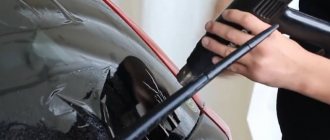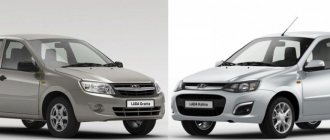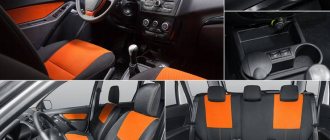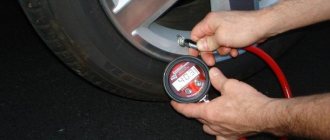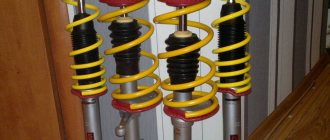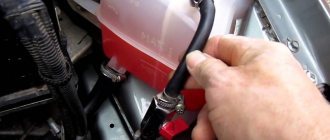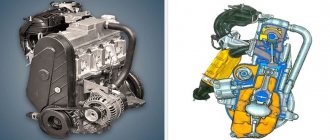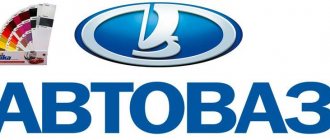Auto repair shops and spare parts stores for VAZ Lada Kalina in Moscow
71 companies to search for spare parts
- Avtorazbor.RF
- Basovskaya street, 16с1 (Office/warehouse No. 3)
- +7 495 66… show all
- Mon-Fri 09:00-20:00, Sat 10:00-18:00
3.2 39 ratings
- Razborka Niva
4.3 3 ratings
- Klondike 77
3.5 2 ratings
- HodosAuto
3.6 15 ratings
- DISCOVERYRange
3.3 3 ratings
- AutoMD
3.1 9 ratings
- BuyBumperRu
3.4 5 ratings
- RazborkAvto
4.1 10 ratings
- 3Bolts
0.0 0 ratings
- Free Mechanics
4.2 8 ratings
- AutoMD
0.0 0 ratings
- DetailsBU
4.3 3 ratings
…
← Prev.Next →
Disassembly and assembly of the Kalina engine
Tool:
- Open-end wrench 10 mm
- Straight box spanner 13 mm
- Straight box spanner 17 mm
- Torque wrench
- Driver for socket attachment
- Knob attachment 10 mm
- Knob attachment 14 mm
- Knob attachment 17 mm
- Extension for wrench attachment
- Rubber hammer
- Knife
- Bore gauge
- Micrometer
- Medium flat screwdriver
- Mandrel 18 mm
- Set of flat styli
Parts and consumables:
- Engine oil
- Rags
1. After dismantling, we install the engine on a stand for disassembly. We remove the generator, cylinder head, flywheel, oil filter.
2. Using a 17 spanner we unscrew two bolts 1 of the lower fastening, and with a 13 spanner we unscrew bolt 2 of the upper fastening of the front right support bracket of the power unit.
3. Remove the front right support bracket.
4. Using a 13mm socket, unscrew the three bolts securing the generator bracket.
5. Remove the generator bracket.
6. Remove the engine oil pan as described here. Using a 10" socket with an extension, unscrew two bolts 1 securing the oil receiver to the main bearing cover and bolt 2 securing the oil receiver to the oil pump housing.
7. Remove the oil pump as described here. Having unscrewed the two bolts securing the supply pipe of the coolant pump to the cylinder block with a 10mm wrench, remove the pipe and its sealing gasket. Using a 10mm socket, unscrew the six bolts securing the crankshaft rear oil seal holder.
8. Remove the rear oil seal holder.
9. The connection between the oil seal holder and the cylinder block is sealed with a gasket.
10. Using a 14mm socket, unscrew the two nuts on the connecting rod cover bolts (the connecting rod should be at bottom dead center).
11. Lightly tap the side surfaces of the connecting rod cap with a hammer with a plastic tip (or soft metal).
12. And we begin to remove the connecting rod cover.
13. Remove the connecting rod bearing shell from the cover.
14. Using the wooden handle of a hammer against the ends of the rods of the connecting rod bolts, we move the lower head of the connecting rod from the crankshaft journal.
15. Remove the piston and connecting rod from the cylinder.
16. We remove the upper connecting rod bearing from the lower head of the connecting rod. Similarly, we remove the pistons with connecting rods from other cylinders. If the parts of the connecting rod and piston group are not damaged and have little wear, they can be used again. Therefore, during disassembly, we mark the parts so that during subsequent assembly they will be installed in their places. Using your fingers, carefully (without exerting much force) open the lock of the upper compression ring.
17. We remove it from the piston groove.
18. Similarly, remove the lower compression ring and, unclamping the lock, remove the oil scraper ring.
19. Remove the oil scraper ring expander.
20. To remove the piston from the connecting rod, use a screwdriver to pry up the retaining ring of the piston pin and remove it from the annular groove of the piston boss. In the same way, remove the other piston pin retaining ring.
21. Use a mandrel to push out the piston pin.
22. Remove the piston from the upper end of the connecting rod. We carry out similar operations with other pistons.
23. Using a 17mm socket, unscrew the two bolts securing the crankshaft main bearing cover.
24. Remove the main bearing cap.
25. Remove the lower crankshaft main bearing shell from the cover. In the same way, remove four more caps of the crankshaft main bearings.
26. We remove the crankshaft from the cylinder block and then remove the two thrust half-rings of the crankshaft (shown by arrows) from the grooves in the support of the third main bearing (in the cylinder block).
27. We remove the upper crankshaft main bearing shells from the cylinder block supports.
28. Using a sharpened tool, remove the remaining sealant from the flattened plane of the cylinder block under the oil pan.
29. In the same way we clean the remains of the cylinder head gasket.
30. We clean the mating surfaces of the cylinder block under the coolant pump pipe and the crankshaft rear oil seal holder.
31. After disassembling the engine, we thoroughly wash and clean the parts of the cylinder-piston group from carbon deposits to check their technical condition.
32. To determine cylinder wear with a bore gauge, we measure the diameter of the cylinder in four zones (at a distance of 8, 15, 50, and 90 mm from the upper plane of the cylinder block) and in two directions (parallel and perpendicular to the axis of the crankshaft). In the area of the first belt (up to 8 mm), the cylinder practically does not wear out, therefore, by the difference in measurements in the first and other belts, the wear of the cylinder can be determined. If the wear of the cylinders exceeds 0.15 mm, it is necessary to bore and hone the cylinders at the service station to the repair size (increased by 0.4 or 0.8 mm).
33. To determine the wear of the piston skirt, use a micrometer to measure its diameter in a plane perpendicular to the piston pin axis, at a distance of 55 mm from the piston bottom. Using a micrometer, we measure the diameters of all main and connecting rod journals of the crankshaft in two diametrically opposite planes.
34. We grind the crankshaft journals to the nearest repair size if wear or out-of-roundness is greater than 0.03 mm, and also if there are burrs and marks on the journals. After grinding the crankshaft journals, it is necessary to remove the oil channel plugs. Then we thoroughly rinse and blow through the channels with compressed air to remove any remaining abrasive. We grind the crankshaft journals, remove and install new plugs at the service station.
35. We assemble the engine in reverse order. We install new crankshaft main bearing shells of nominal or repair size (after grinding the shaft journals). We install liners with grooves on the working surface into the cylinder block supports, and without grooves into the main bearing caps. Lubricate the bearings with engine oil and place the crankshaft in the cylinder block supports. We insert thrust half-rings lubricated with engine oil into the grooves of the third main bearing support.
36. The surfaces of the half rings with antifriction coating (they have grooves) must face the thrust surfaces of the crankshaft.
37. We install the main bearing caps in accordance with the marks (see figure) marked on their outer surface (the caps are counted from the timing belt drive side). When installing, we orient the covers so that the marks on them are located closer to the front side of the cylinder block (the side where the generator is mounted). In this case, the locks of the upper and lower shells of each main bearing are located on one side.
Marks on the main bearing caps
38. Tighten the main bearing cap bolts to a torque of 68-84 Nm.
39. Pistons for cylinders are selected according to classes of cylinder diameters and piston skirts. The diameter class of each cylinder (in our case, this is class C) is stamped opposite the cylinder on the lower plane of the block (the mounting plane of the oil pan).
40. The piston skirt diameter class is marked on the piston crown. Pistons of the same weight class are installed in the engine.
Marking on the piston bottom: 2 - piston class based on the diameter of the pin hole; C - piston skirt diameter class; — when installing the piston into the cylinder, the arrow should be directed towards the timing drive; G - piston class by mass.
41. Marking of connecting rod classes by weight and diameter of the hole for the piston pin is applied on the connecting rod cover.
Marking on the connecting rod cover: H – connecting rod weight class; 2 - class of connecting rod based on the diameter of the hole for the piston pin.
42. Before assembling the connecting rod and piston group from new parts, it is necessary to select pins for the pistons and connecting rods. The class of the piston and connecting rod according to the diameter of the pin holes must correspond to the class of the pin diameter. A correctly selected piston pin, lubricated with engine oil, should fit into the hole in the upper head of the connecting rod with a pressing force of the thumb and not fall out of it in a vertical position.
43. When assembling the piston and connecting rod, we orient them so that when installed in the cylinder, the serial number stamped on the connecting rod is located closer to the rear wall of the cylinder block (on which the oil filter is located). Before installing piston rings on the piston, it is necessary to check the thermal clearances in the ring locks. To do this, insert the piston ring into the cylinder in which it will be installed during assembly and align the ring with the bottom of the piston.
44. Using a set of flat feeler gauges, we check the gap in the piston ring lock. The gap should be 0.25-0.45 mm. The maximum permissible gap for wear is 1 mm.
45. Lubricate the grooves on the pistons under the piston rings with engine oil. Install the rings on the pistons. We install the lower compression ring with the groove (“scraper”) down. If the ring is marked “TOP” or “TOP”, place the ring with the mark facing up.
46. We arrange the rings as follows:
- We orient the upper compression ring lock at an angle of about 45° to the piston pin axis;
- the lock of the lower compression ring is at an angle of 180° to the axis of the lock of the upper ring;
- The oil scraper ring lock is at an angle of 90° to the axis of the upper compression ring lock.
47. When installing the oil scraper ring, place the expander joint on the side opposite to the ring lock. Before installing the parts of the cylinder-piston group, lubricate the cylinders, pistons with rings and connecting rod bearings of the crankshaft with engine oil.
48. Before installing the piston into the cylinder, we put an adjustable mandrel on the piston and, tightening the mandrel, compress the piston rings.
49. Install the piston with connecting rod into the cylinder. In this case, the connecting rod journal of the crankshaft of this cylinder should be in the position of the bottom dead center. Using the hammer handle against the bottom of the piston, we push it into the cylinder.
50. Having removed the mandrel, use the handle of a hammer to push the piston into the cylinder until it stops. At the same time, we control the fit of the connecting rod lower head shell on the crankshaft journal.
51. When installing the connecting rod cap, the serial numbers on the connecting rod and the cap must match and be located on the same side of the connecting rod.
52. We carry out further engine assembly in reverse order.
The article is missing:
- Photo of the instrument
- Photos of parts and consumables
- High-quality photos of repairs
Source: https://wiki.zr.ru/83_Repair_Kalina
Questions for auto analysis in Moscow
- D
Denis asks a question to RazborkAvto, October 08, 2022, 12:23do you need trunk hinges for Lada Kalina? who can help, what is the price?
- IN
Vladimir asks a question to RazborkAvto, July 6, 2022, 09:11Is there a left mirror Kalina 10g.
- S
serg asks a question to Mopar-UP, April 19, 2022, 17:52Good afternoon Kalina 1, 2022. Color - white. I'm looking for a used one: front bumper, right front fender, left front fender.
Analysis of Kalina 2 station wagon
Lada K alina 2 . REMOVAL AND INSTALLATION OF FRONT TUNNEL LINER
You will need: flat-blade and Phillips-blade screwdrivers.
On a vehicle with a manual transmission, perform the following work.
1. Disconnect the wire from the negative terminal of the battery.
2. Remove the rear part of the floor tunnel lining, see “Removing and installing the rear
11. Install the front part of the floor tunnel lining in the reverse order of removal.
On a car with an automatic transmission
do the following:
1. Disconnect the wire from the negative terminal of the battery.
2. Remove the back of the floor tunnel lining
3. If the car has a removable ashtray, remove it from its slot in the trim.
goods for your car
Hello dear customer - we present to your attention an assortment of 140 pcs. from the group: Spare parts.
These products are sorted by the characteristic “Car model”: and the value 2194 Kalina 2 (station wagon).
We can deliver Spare parts cash on delivery for 2194 Kalina 2 (station wagon), subject to payment in one of three options:
1) without prepayment with the condition of making an advance payment for delivery to the transport company at the cash desk of the transport company Business Lines.
2) when you pay for delivery, we will send cash on delivery: PEC, Zheldor, KIT (payment to the transport company after inspection of the cargo), Russian Post
3) when you pay for delivery, we will ship with the cargo blocked by any other transport company.
You can filter by other characteristics (note the filter on the right), as well as filter products by car make/model - a convenient filter is located under the site header.
also other page properties:
80 rub. — minimum price of the product on the page
32,000 rub. — maximum product price on the page
— name of the root category
— name of the parent category
Dismantling of VAZ Lada Kalina cars in other cities in the Moscow region
- Balashikha
- Bronnitsy
- Vidnoe
- Voskresensk
- Dzerzhinsky
- Dmitrov
- Dolgoprudny
- Domodedovo
- Dubna
- Yegoryevsk
- Zhukovsky
- Zelenograd
- Ivanteevka
- Istra
- Kashira
- Wedge
- Kolomna
- Korolev
- Krasnogorsk
- Krasnoznamensk
- Cuban
- Lobnya
- Lytkarino
- Lyubertsy
- Bear Lakes
- Mozhaisk
- Mytishchi
- Naro-Fominsk
- Noginsk
- Odintsovo
- Lakes
- Orekhovo-Zuevo
- Pavlovo
- Pavlovsky Posad
- Pawns
- Podolsk
- Pushkino
- Ramenskoye
- Reutov
- Sergiev Posad
- Serpukhov
- Solnechnogorsk
- Old Kupavna
- Stupino
- Tomilino
- Fryazino
- Khimki
- Chekhov
- Shatura
- Shmelenki
- Shchelkovo
- Elektrostal
Catalog of car services
Analysis and stores of new original and contract used spare parts Lada Kalina in Moscow: addresses, phone numbers, reviews, questions and answers, photos and videos.

